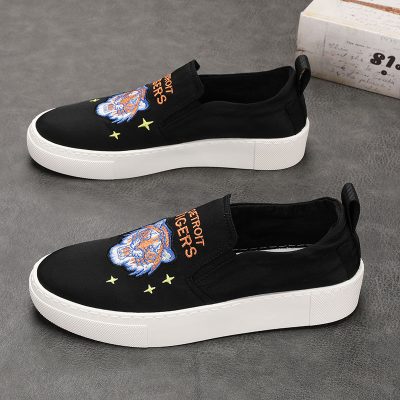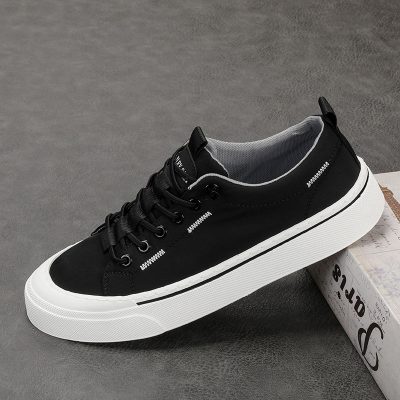Canvas shoes have been a staple in casual footwear for decades, known for their comfort, versatility, and classic style. The evolution of canvas shoe soles reflects a blend of tradition and innovation, adapting to modern needs while preserving their timeless appeal. Here’s a look at how canvas shoe soles have evolved:
Early Beginnings
1. Natural Rubber Soles
- Origin: The earliest canvas shoes featured soles made from natural rubber, which provided good flexibility and grip.
- Benefits: Durable, comfortable, and offered adequate traction, making them ideal for sports and casual wear.
Mid-20th Century Developments
2. Vulcanized Rubber Soles
- Innovation: The process of vulcanization, which involves heating rubber with sulfur to create a more durable and elastic material, revolutionized canvas shoe soles.
- Examples: Brands like Converse and Keds became popular, with vulcanized rubber soles that offered superior durability and a distinct look.
- Benefits: Enhanced durability, better grip, and improved resistance to wear and tear.
Late 20th Century to Early 21st Century
3. Introduction of EVA (Ethylene Vinyl Acetate)
- Innovation: EVA foam started being used in midsoles and insoles, providing better cushioning and shock absorption.
- Benefits: Lightweight, comfortable, and offers excellent cushioning, making canvas shoes more suitable for all-day wear.
4. Incorporation of Synthetic Materials
- Innovation: Use of synthetic rubbers and other man-made materials to enhance the performance of soles.
- Benefits: Improved durability, better traction, and resistance to environmental elements like water and heat.
Recent Innovations
5. Hybrid Soles
- Innovation: Combining different materials, such as rubber for the outsole and EVA for the midsole, to balance durability, comfort, and performance.
- Benefits: Enhanced overall performance, with specific materials optimizing different aspects of the shoe’s functionality.
6. Eco-Friendly Materials
- Trend: Growing awareness of environmental issues has led to the development of eco-friendly soles made from recycled rubber, organic materials, and biodegradable components.
- Benefits: Reduces environmental impact, offers sustainability, and often maintains high performance.
7. Advanced Cushioning Technologies
- Innovation: Incorporation of advanced cushioning technologies such as memory foam, air pockets, and gel inserts in the sole design.
- Benefits: Superior comfort, better shock absorption, and enhanced foot support for long periods of wear.
Future Directions
8. Smart and Adaptive Soles
- Potential Innovation: Development of smart soles with embedded sensors that can adapt to the wearer’s activity and provide real-time feedback on posture and gait.
- Benefits: Personalized comfort and support, potential health benefits by promoting better posture and foot health.
9. Customization and 3D Printing
- Innovation: Use of 3D printing technology to create customized soles that perfectly fit the user’s feet.
- Benefits: Perfect fit, tailored support, and the ability to design soles for specific needs or preferences.
Conclusion
The evolution of canvas shoe soles is a testament to how traditional designs can integrate modern innovations to meet contemporary needs. From natural rubber to advanced hybrid materials, the continuous improvement in sole technology has enhanced the comfort, durability, and performance of canvas shoes. As technology advances, we can expect further innovations that will continue to blend tradition with cutting-edge developments, ensuring that canvas shoes remain a beloved choice for generations to come.


















